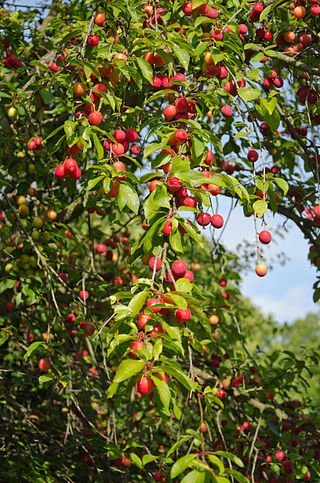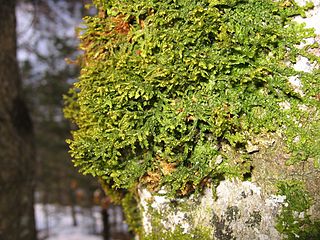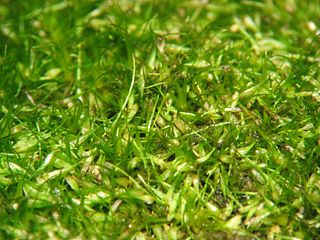
Alders are trees that compose the genus Alnus in the birch family Betulaceae. The genus includes about 35 species of monoecious trees and shrubs, a few reaching a large size, distributed throughout the north temperate zone with a few species extending into Central America, as well as the northern and southern Andes.

Prunus cerasifera is a species of plum known by the common names cherry plum and myrobalan plum. It is native to Southeast Europe and Western Asia, and is naturalised in the British Isles and scattered locations in North America. Also naturalized in parts of SE Australia where it is considered to be a mildly invasive weed of bushland near urban centers. P. cerasifera is believed to one of the parents of the cultivated plum, Prunus domestica perhaps crossing with the sloe, Prunus spinosa, or perhaps the sole parent. This would make it a parent of most of the commercial varieties of plum in the UK and mainland Europe - Victoria, greengages, bullace etc.
Jakob Friedrich Ehrhart was a German botanist, a pupil of Carl Linnaeus at Uppsala University, and later director of the Botanical Garden of Hannover, where he produced several major botanical works between 1780 and 1793. Ehrhart was the first author to use the rank of subspecies in botanical literature, and he published many subspecific names between 1780 and 1789. Ehrhart issued several exsiccatae, the first one Phytophylacium Ehrhartianum, continens plantas, quas in locis earum natalibus collegit et exsiccavit Fridericus Ehrhart (1780-1785). He was one of the first who prepared exsiccatae for selling them to colleagues, namely the series Arbores, frutices et suffrutices Linnaei quas in usum dendrophilorum collegit et exsiccavit Fr. Ehrhart and Calamariae, Gramina et Tripetaloideae Linnaei, quas in usum botanicophilorum collegit et exsiccavit Fr. Ehrhart.

Prunus serotina, commonly called black cherry, wild black cherry, rum cherry, or mountain black cherry, is a deciduous tree or shrub in the rose family Rosaceae. Despite its common names, it is not very closely related to commonly cultivated cherries. It is found in the Americas.

Lejeuneaceae is the largest family of liverworts. Most of its members are epiphytes found in the tropics, while others can be found in temperate regions.

Calceolaria, also called lady's purse, slipper flower and pocketbook flower, or slipperwort, is a genus of plants in the family Calceolariaceae, sometimes classified in Scrophulariaceae by some authors. This genus consists of about 388 species of shrubs, lianas and herbs, and the geographical range extends from Patagonia to central Mexico, with its distribution centre in Andean region. Calceolaria species have usually yellow or orange flowers, which can have red or purple spots. The Calceolaria Herbeohybrida group, also called C. herbeohybrida Voss, is a group of ornamental hybrids known only in cultivation, called florists' slipperwort.

Honckenya peploides, the sea sandwort (UK) or seaside sandplant (Canada), is the only species in the genus Honckenya of the plant family Caryophyllaceae. Other common names include sea chickweed, sea pimpernal, sea-beach sandwort, and sea purslane. The scientific name is often spelled "Honkenya", and is named after the German botanist Gerhard August Honckeny. This plant has a circumboreal distribution.
Lejeunea drehwaldii, synonym Sphaerolejeunea umbilicata, is a species of liverwort in the family Lejeuneaceae. It is endemic to Colombia. Its natural habitat is subtropical or tropical moist lowland forests.

Epipactis microphylla, the small-leaved helleborine, is a species of orchid. It is native to much of Europe and to Southwest Asia as far east as Iran though noticeably absent from the British Isles and from Scandinavia. It has also been found in North Africa, in the Babor mountains in Little Kabylia, Algeria.

Barbilophozia is a liverwort genus in the family Anastrophyllaceae.
Eliza Amy Hodgson was a New Zealand botanist who specialised in liverworts.

Lejeunea is a genus of leafy liverworts in the Lejeuneaceae family. The GBIF lists up to 592 species, along with a worldwide distribution. World Flora Online lists up to 531 species.

Lejeunea hodgsoniana is a species of liverwort in the family Lejeuneaceae. Endemic to New Zealand, it was first recognized in 1980 but not formally described until 2013. The plant forms bright green mats up to 7 cm (2.8 in) in diameter on tree bark and occasionally on rocks. The species is found from the Kermadec Islands in the north to the Chatham Islands in the south, primarily in coastal and lowland areas below 100 m (330 ft) elevation. It is distinguished from related species by its relatively large size, multi-celled tooth on the leaf lobule, and deeply divided underleaves with pointed tips. While showing a particular affinity for mahoe trees, it grows on various native and introduced trees and is considered "Not Threatened" under the New Zealand Threat Classification System due to its abundance within its range and ability to grow in both pristine and disturbed habitats.

Porellales is an order of liverworts.
Circaea × intermedia is a hybrid of flowering plants in the evening primrose family Onagraceae. The parents of the hybrid are Circaea alpina and Circaea lutetiana.

Dicranodontium denudatum is a species of moss belonging to the family Dicranaceae.

Erysimum odoratum is a species of flowering plant belonging to the family Brassicaceae.

Meesiaceae is a family of mosses belonging to the order Splachnales.
Lejeunea mandonii, also known as Atlantic lejeunea is a species of liverwort from the Lejeuneaceae family.













